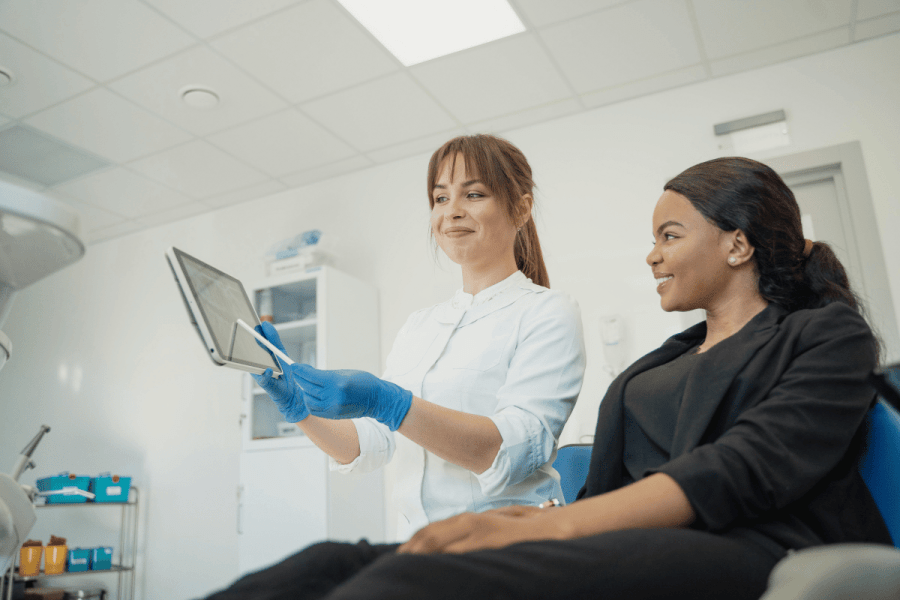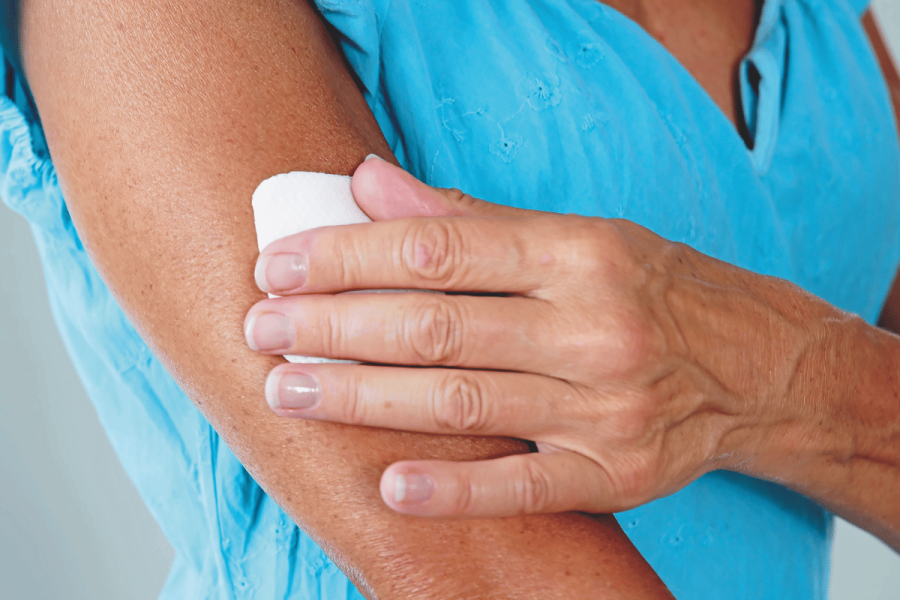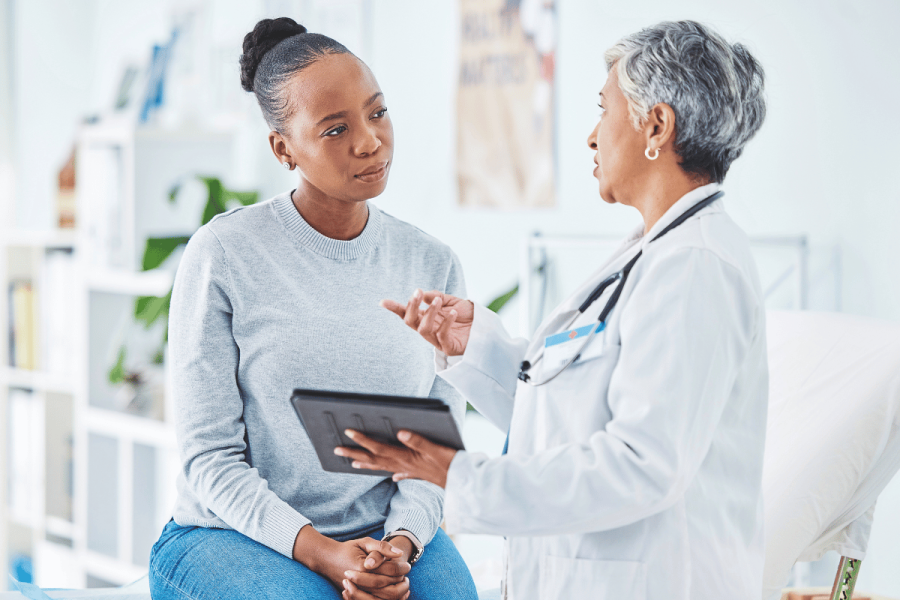The world of HRT and fluctuating hormones can be a complicated place! Editor-in-Chief Katy Sunnassee takes a deep dive into HRT with Dr Shirin Lakhani to discuss the different forms and formulations and what they do.
Words: Katy Sunnassee. Images: Shutterstock
Q. What are the differences between the various forms of HRT, Especially between “body identical” and “bio-identical”?
This is a common source of confusion. The first type of HRT was synthetic, and was oestrogen derived from pregnant mares. The early form of progestins were synthetic too – I use the term progestin, not progesterone, as the former is the term for the synthetic version. Natural progesterone is completely different to synthetic, and we’ll come onto that in a bit.
But broadly speaking, you have synthetic and then more natural HRT. The more natural variety was and still is called “bio-identical” because it works on your receptors in the same way your natural “endogenous” hormones do or would. Bio-identical HRT is often made in smaller, independent compounding pharmacies, not by large pharmaceutical companies.
But as time went on, the oestrogen component of HRT available on the NHS also became available as bio-identical, including in transdermal patches. This led to confusion between what you could get from a private doctor via a compounding pharmacy, and what we have on the NHS, so that’s where the term “body identical” was born to differentiate.
Body identical HRT is essentially the same as bio-identical it’s just liscensed and made by pharmaceutical companies, whereas what we still refer to as “bio-identical” HRT is made by specialist compounding pharmacies. So, it’s really only a difference between who makes it, as they’re both made from the same raw materials: yams.
Big pharma companies make products on a larger scale, they’re licensed by the MHRA, and they’ve got big randomised control trials behind them, whereas the smaller compounding pharmacies don’t have that same level of backing and studies behind them; that’s not to say they’re not safe – they too are regulated, but they don’t make the products in quite the same way as the big companies.
It’s all about the scale of production and the licensing that differentiates body identical from bio-identical.

Q. Does body-identical HRT come in standard doses? And can compound pharmacies tweak the doses?
Yes, body identical HRT is made in set doses. Let’s say you’re looking at estradiol in a patch: you could get a 50mg patch, you could get a 100mg patch. There are set dosing intervals, whereas with bio-identical HRT, it can be made to contain whatever dose you want and be tweaked to the individual. HRT comes in patches, creams, lozenges and tablets. With estrogel, for example, that comes in a fixed dose per pump. I found for me, personally, even half a pump was too strong, and I ended up going on a compounded, i.e. bio-identical, estradiol on a really low dose because I was very sensitive to oestrogen. I needed some, but not as much as was in standard body identical formulations.
Q. How did you know that the level of oestrogen was too strong? What were your symptoms?
The main thing was really severe breast pain. I knew it was due to the oestrogen because I didn’t have enough progesterone to counteract it, but even increasing my progesterone level didn’t take care of it. I also had a DUTCH test, which confirmed that I was oestrogen dominant.
Q. Can you please explain the different delivery mechanisms for HRT? And are some better than others?
The reason we’ve got more than one delivery system, other than oral, and particularly for oestrogen, is because oestrogen is metabolised in your liver. When you take a tablet, it goes through the digestive system and liver and gets broken down into various metabolites. So, to get an effective dose, the best way to take oestrogen is transdermally, i.e. through your skin.

This can be a gel, cream or patch, as this will avoid liver metabolism. The other way you can take it is in a lozenge, which you put next to your gum and it dissolves slowly and directly into your bloodstream, bypassing the stomach and liver. Progesterone is different. It doesn’t undergo the same form of metabolism as oestrogen and you generally take progesterone orally, but it can be transdermally as well. If you look at standard HRT, you get combination patches that contain both oestrogen and progesterone, so that’s a transdermal delivery for both.
One of the big benefits of bio-identical HRT is that you can get one cream that contains all your hormones in personalised doses. The benefits of taking progesterone orally, which you don’t get transdermally, are neuro-protective benefits including a mood-calming effect, as well as uterine protection. With transdermal bio-identical progesterone, we don’t have enough evidence to know whether you can get enough uterine protection, as there haven’t been the studies.
This is why if you do take it transdermally, through a private clinic, you’ll usually need a vaginal scan yearly to make sure you’re not getting a thickening of the uterine lining. Because if you don’t have enough progesterone compared to oestrogen, you’ve got the risk of endometrial cancer.
This is why most experts recommend you either take progesterone orally or you have an IUD fitted that contains progesterone, for example a Mirena coil that delivers synthetic progestin locally.
Q. Is a DUTCH test (Dried Urine Test for Comprehensive Hormones) helpful before starting HRT?
Yes, but this won’t be offered on the NHS, you’d have to pay privately. I’d say it’s not essential for every woman to have a DUTCH test because at the end of the day we go by symptoms more than anything. Of course, it is useful to have the information because the test shows the metabolites of each hormone, meaning it shows how well, or not, you’re breaking down the hormones to be recycled or excreted after use.

Some people metabolise in a good way, some don’t. Some pathways are potentially harmful to health, so knowing this can help inform choice and dose of HRT. I have patients who want to have it done before they start, which is great because then we’re armed with information – for example, if they’re oestrogen dominant.
One of my colleagues tests all her patients as she says she wouldn’t drive a car blindfolded, which is a great analogy. But for those who don’t want to or can’t afford to pay for it at the outset (DUTCH tests can be hundreds of pounds, depending on who does it and which one you do), we tend to only do it if the HRT isn’t going to plan and they’re still having symptoms.
Q. Does everyone need to be on some form of oestrogen as they enter perimenopause?
I think a lot of people assume HRT is just oestrogen, as that’s mainly what we hear about. But at the start of perimenopause, it’s progesterone that declines so you may not need oestrogen in the beginning, perhaps just progesterone.
If you have high oestrogen with low progesterone, that can potentially lead to cell proliferation, i.e. growth, in the form of cysts, endometrial thickening, heavy clotted periods, fybroids etc. So, it’s more protective to have the progesterone to balance things out. This is why perimenopause can be so turbulent, because it’s not lack of oestrogen, it’s lack of progesterone and fluctuating oestrogen.
Oestrogen can be sky high, then it can be down low, and that changes throughout time. So, it’s not static either.

Q. Let’s talk about testosterone, as that’s not available on the NHS, is it?
Actually, it is available on the NHS, but in a dose designed for men, which is eight times higher than it needs to be for a woman. It comes in single-dose sachets, so what women end up doing is taking the sachet and dividing it into 8-10 doses, which isn’t ideal. One day you might use too much, the next day you might use too little.
Ideally what we want is a pump that gives the correct dose. It’s a bit of a postcode lottery as to who can get it, and we’re campaigning for a female-dose formula. There’s cream called AndroFeme that’s liscenced in Australia, and has recently been approved in the UK and should be available on the NHS next year.
Testosterone is also mostly taken transdermally, as if you were to take it orally, it would mess up your liver. You can also get it as an injection or sublingually, but the most common form in the UK is a gel. Another option is to compound the testosterone, which is what a lot of my female patients do because then you can tailor the dose. So, if someone needs less or more in the formula, we can make it bespoke.
Q. How would women know if testosterone might benefit them?
In addition to a loss of libido, some of the symptoms of low testosterone are fatigue, brain fog, loss of muscle mass, weight gain: the kind of things you associate with middle-aged men as well. Testosterone supports your brain, muscles and energy levels. If you were looking to go on testosterone, you’d need to be tested first. What we find with women is sometimes in menopause, their testosterone levels are high relative to their oestrogen, therefore testosterone replacement wouldn’t benefit them. But other times it can be low, so a supplement could then be considered.
Dr Shirin Lakhani works with women to help balance their hormones. She is a GP and fully trained aesthetic physician specialising in intimate rejuvenation (P Shot, O Shot), and the founder of Elite Aesthetics (elite-aesthetics.co.uk). She is also an expert in lichen sclerosus, a painful skin condition affecting the vulva – see the upcoming November issue for more on this. She has teamed up with Pause Live to launch their Know Your Normal campaign to encourage women to check their vulvas more often (pauselive.com/know-your-normal).
Have more questions about perimenopause, menopause, or HRT? See our menopause archives here.







